Have you ever had a song
come from nowhere in your head?
Not a song you’ve heard on the radio—
one of those earworms that won’t let go
and haunts your consciousness for days…
not one of those...
I mean a tune or chorus that makes you say,
“I haven’t heard that since I don’t know when.”
And there’s a risk you’ll soon forget it again.
That happened to me today
with a song from the sixties that I dare say
few people in general heard at the time
(and fewer will likely remember). But I'm
pretty sure my sister still knows it by heart
and may even be able to sing her part
if Minda and Sharon would do the same.
They were a trio, but I forget its name.
Imagine three uniquely beautiful girls,
best friends they were

who had not long ago lived for
sleep-overs (before cable or VCRs)
planned around televised “beach movies”
(with Frankie Avalon and Annette)
or “Tammy Falls in Love” or “Gidget”
but who had now moved on
to real-life romance of their own
with slightly “bouffant hair”
perfectly pampered in place
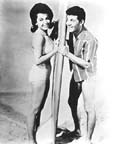
for fancy church banquets with dates
(if you can call them that)
with boys who had been their friends
in youth group or school and who
would soon return to that brotherly role.
Imagine these same three girls
as they take the church platform on cue
and stand poised at the pulpit
with smiles of intense innocence.
The pastor’s wife at the piano to their right
gives a note for the harmonic intro
then begins the crisp staccato pace
as the agile smiles articulate these words:
“There’s a melody of gladness
that is ringing in my heart
since I met the blessed Christ of Calvary…
[I'm humming here... because I forgot this part
and then comes the bright chorus …]
“In my heart a melody is ringing
with a joy that never shall depart
and an angel’s song could not be sweeter
than the song that’s ringing in my heart.”
[There were other verses,
and the chorus repeats, but at the end
the three smiling cherubs chime:]
“Ringing…ringing…ringing…in my heart.”
This beginning and end was reminiscent of Shelley Fabares' repeated harmonies at the beginning of “Johnny Angel,” but other than that, this song picked up where "Happiness is the Lord" left off and galloped on with caffeinated joy. I’d link to the lyrics, but so far I’ve not found them in cyberspace. Perhaps someone can provide them by way of a comment.
That was not the only song Kathy, Minda, and Sharon sang in church. They borrowed the entire repertoire of “The Peterson Trio.” I searched and searched the in

ternet and finally found this album photo. Otherwise all memory of The Peterson Trio seems to have fallen off the face of the flat earth of vinyl records, the needle-drop world we once enjoyed before cassettes and CDs and MP3s changed the tactile nature of holding and hearing recorded music. In that day, the album jacket was studied over and over as we listened to our music. My brother Paul liked one of the Peterson girls on the cover. He never met her, of course, but he did, in fact, date a girl at church who bore a striking resemblance to the girl in the lower right.
I don’t know what brought the “Melody of Gladness” from some cerebral corner of my mind after more than thirty years. It just came back to me and I saw my sister and her two best friends singing it in the church of my childhood, a place that occupies the same corner of my mind.
I know such songs were mostly “fluff,” and will not likely come to me in times of trouble the way the great hymns of faith do (e.g. “It is Well With My Soul” or “When I Survey the Wondrous Cross”). But in the same way that the “duwap” classics of the Fifties and Sixties captured the upbeat joy of the times, so did many of the choruses introduced to "the church" during the Sixties. Criticizing them for lack of "content" would be like dissing "Leave it to Beaver" or Mayberry for depicting sugar-coated idealism (as if post-modern cynicism and TV's airing of life's dirty laundry has produced better trends for American families).
The father of the Peterson Trio was none other than John W. Peterson, the "dean of
modern hymnwriters," (as this
link has dubbed him). He and his contemporaries cranked out the choruses we sang in "Young Peoples" (the catchy name we called our Sunday evening youth service). Most of Peterson’s
music is no longer in print, but

one of his
grandsons (I suspect he’s the son of the daughter Paul liked in the trio) has released a CD called "Legacy" of some of his grandfather’s "classics." (Speaking of legacies, if you look closely at the Peterson Trio album cover, you'll notice the accompanist is Harold DeCou. I now work with his son who is our minister of music.) [
Update: When I asked J.D. about this, he told me the Peterson girls used to be his babysitters when his family traveled with them. "Who didn't have a crush on them?" he laughed. ]I’m not predicting a come back of “church oldies” from the Sixties; I'm not saying I think our church should try to revive the

m for the "contemporary service." (Though they were contemporary in the Sixties, some boomerangs don't come back.) But I can say if I got an invitation to a "
Singspiration" with the folks who first learned those songs with me, I'd be there. After each song we'd lean to one another and say, “I haven’t heard that since I don’t know when." To cap it off, Kathy, Minda, and Sharon could make a surprise appearance to sing "A Melody of Gladness."
Since such a gathering is not likely to happen on earth, next time we're home, I'll pull out some old "
Favorites" from my mother's overflowing piano
bench and we'll have a singspiration of our own. (Because of Mom’s health, my youngest daughter may have to play piano for us, but the singing will be sweet.) I can only imagine the songs that will be sung in heaven. I think they'll be new songs--at least, new to us.... which reminds me of another song I haven't heard since I don't know when: "There's a New
Song in My Heart."
.
T.K.




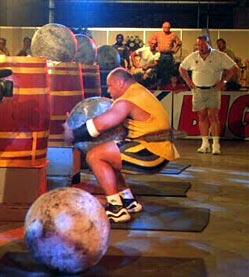



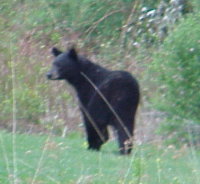











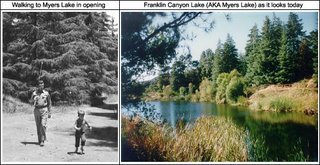







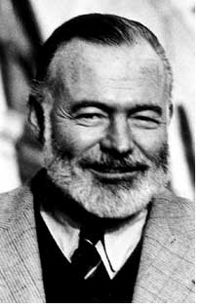








 welcome offered to passers by on a front porch. "Good times” heard but not seen are less inviting than the irresistible neighborly greeting, gathering, and conversation on a front porch near a sidewalk.
welcome offered to passers by on a front porch. "Good times” heard but not seen are less inviting than the irresistible neighborly greeting, gathering, and conversation on a front porch near a sidewalk.










